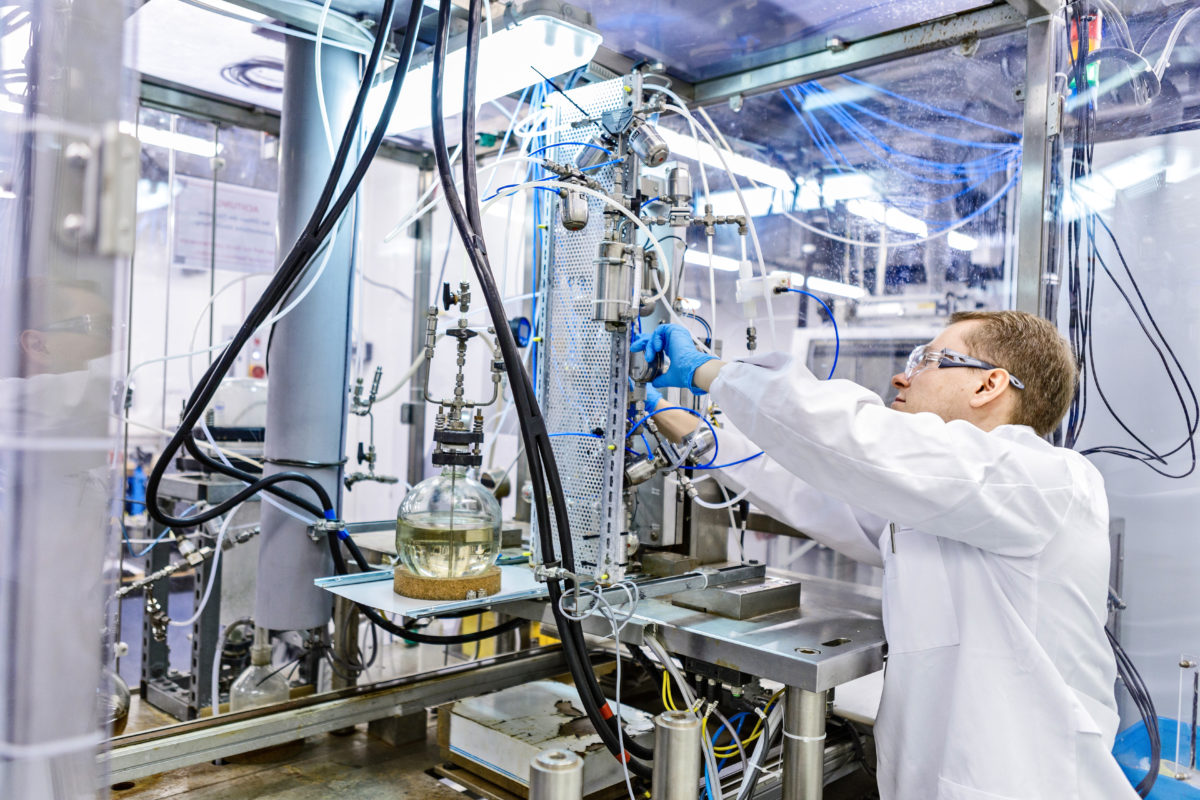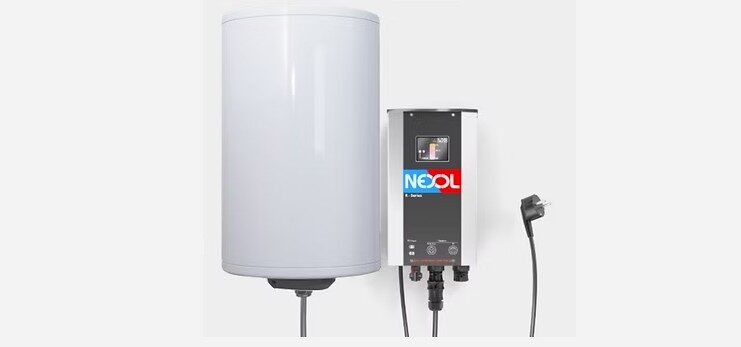Innovative battery technology provider Innolith AG announced the commercial launch of its inorganic electrolyte technology to improve lithium-ion batteries for grid-scale storage applications.
According to the company, the use of the new type of electrolyte allows mitigating the inherent limitations lithium-ion batteries have. Reportedly, the new battery electrolyte allows up to 50,000 charging cycles and eliminates flammability. This longevity would effectively reduce the costs per charging cycle, making it a more attractive solution for cycle intensive applications, such as grid storage systems providing frequency response.
At this first stage, Innolith says it will start commercial production of the batteries at an undisclosed location and with an undisclosed manufacturer. At the inquiry of pv magazine, Innolith board chairman Alan Greenshields said he could not disclose which company has secured the manufacturing deal, but “it is a very well established and known company as we are looking to work with strong experts.”
Innolith runs a site with 60 employees in Bruchsal, Germany, where chemists and engineers develop the technology. At this location, it performs basic cell research and development, battery management and cooling, as well as providing engineering support for the manufacturer and manufacturing process validation.
Innolith will supply its electrolyte to the undisclosed battery manufacturer, which will in turn produce the batteries. Greenshields highlights that through this partnership, the companies will be closely tied and that this is not just a supply deal.
When asked if the technology could be supplied to any manufacturer for integration into their lithium-ion batteries, he said that “the new electrolyte requires a different battery design. The higher conductivity means that the cells require electrodes that are ten times as thick. So, the modern flat layouts of lithium batteries are not applicable to the new electrolytes.”
He does, however, say that the existing architecture for Nickel-metal-hydrate (NiMH) batteries would be suitable for the technology. In the medium-term, Innolith aims to provide licenses and the electrolytes to manufacturers which are willing to produce with the new type.
Just the right chemistry
Greenshields further explained that the electrolyte is non-reactive, which addresses the issued chemical decomposition intrinsic to lithium-ion batteries. Conventional electrolytes react with the materials of the anode and other components inside the battery cells, causing a chemical reaction, which leaves the materials with a lower capability to perform.
According to Innolith this non-reactive property allows the battery to maintain its capacity through 50,000 charging cycles. It says this is 10 times higher than for conventional lithium-ion batteries.
Furthermore, the new material renders lithium batteries effectively non-flammable, addressing a persistent issue in the technology. Greenshields says the problem initially occurred through a design flaw by Sony, which brought lithium-ion batteries to the market.
By his account, Sony addressed the issue with battery management systems, which would prevent overcharging and other causes for overheating. This works fine for consumer electronics, but has been a headache when batteries increased in capacity for EV’s and grid-scale storage, he says.
Greenshields touts that the technology reflects the company’s philosophy to fix issues on a chemical level, rather than continuing to work with flawed chemistry and build complicated systems around it to make it work.
Lower costs through more cycles
For now, the batteries will be used in grid-scale applications only, though Greenshields said that R&D processes are ongoing to bring the electrolyte into EV and residential storage applications. No more details could be shared, however.
When asked what the per kW/h costs of the battery are, Greenshields responded that “cost per kW/h as a metric made sense for smaller batteries in the past. However, with grid storage for frequency response, the cost of a battery should be determined in cost per cycle.”
According to him, grid storage batteries would run through around two cycles per day, which gives batteries with a higher maximum cycle count an advantage – financially and from a sustainability perspective. Following up on that point, Greenshields was asked whether higher upfront investment costs might not prevent investors from buying into the technology, as return on investment (ROI) periods could exceed current standard investment practices. He responded that “our batteries have a shorter payback period and also win on that metric.”
The company’s board chairman adds that the batteries could have an operative life-cycle of 15 years. This would be higher than with conventional lithium-ion batteries. Already, there would be “many companies inside the U.S., but also many outside the U.S. that have expressed interest in the new batteries,” he says. Though, he could not further specify which companies have expressed interest, or in which countries or continents these would be located in.
New game – new luck
The new inorganic electrolyte is in fact not a new technology. Alan Greenshields was already involved in fortu Powercell GmbH, a company working on inorganic electrolytes of that type, which was founded in 1997. Greenshields said that the company set out to produce a battery that is safe to use, meaning non-flammable, and is highly durable.
“With Innolith, we have finally achieved what we set out to do,” he states. As fortu could not do it, the company was acquired by Alevo Group SA, in 2014. Alevo took over the patents and continued work on the electrolyte. However, in attempting to make the jump from small-scale production for trial purposes in Germany, to large-scale commercial production in the United States, the company burned through its financial assets – at tax benefits it received in the US – and ultimately reported insolvency.
In the following Chapter 11 consolidation, assets such as the manufacturing site, were sold off for a fraction of the costs and are no longer at the disposal of Alevo, or Innolith. The latter managed to secure IP rights to the electrolyte technology and Greenshields, again involved in the third company, has a chance to give the technology another try.
Speaking about the likelihood of success on the third attempt, Greenshields responded swiftly that, “Rudolf Diesel never sold a Diesel engine.” According to him, new technologies need time to reach commercial maturity and the right strategy. With fortu and Alevo this was not the case, but learning from the past Innolith would be in a better position to bring the product to the market.
“Other than before, we are counting on an experienced manufacturing partner to manage the upscaling of the production for us. The technology and R&D will remain our core focus, as this is our main competence,” says Greenshields
With regards to the company’s major stakeholder Dmitry Rybolovlev, who is on the section 241 report list of foreign nationals to be sanctioned, issued by the U.S. Treasury Department, Greenfields refused to provide information. “Innolith is allowed to do business everywhere in the world, and I cannot give information on our shareholder structure.”
He adds that such incidences show the importance of spreading manufacturing across the world, to avoid being at the will of politics. In this vein, he disclosed that the manufacturing site would be located in Europe, as close as possible to the R&D site in Bruchsal in Germany, to allow for seamless communication between R&D and manufacturing engineers. “We would produce in the U.S. if we found a positive business case to do so,” he concluded.
This content is protected by copyright and may not be reused. If you want to cooperate with us and would like to reuse some of our content, please contact: editors@pv-magazine.com.




In the article, there is a mention of trying to determine the cost per kW/h. I believe this to be a mistake. Please advise.
Thank you for your comment. Note that when I write cost per kW/h I mean the upfront investment costs, not the tariff for feeding electricity into the grid. While there are certainly many metrics to determine the price of a battery, cost per kW/h is widely recognized. If one was to determine the price very accurately of course cost per kW would also be interesting. But as batteries have come to be built with a C-rate fairly close to 1, the determination of a batteries price per kW/h makes sense. Many statistics on the current price for lithium-ion batteries use this metric. Irena, for example, released a report in October 2017 where they analyzed the costs of different storage technologies using this metric. Thereby, Li-ion stationary storage is at around $1000/kWh and for EV’s it is just $220/kWh. Following from this a $1000/kWh battery sized 2MW (assuming C-rate 1) costs $2.000.000 just for the battery. Of course, there is installation etc. to add, but it gives one a good idea. I hope this answer helped.
Hey, people, science pedant here.
The unit of energy you refer to is the kW.hr not the kW/hr.
The difference is important, as the first means power x time which is energy, while the second means power divided by time which would be meaningless unless we were talking about a δ-power, when it would be the rate at which power was changing.
Want to know why it’s important?
Google Dimensional Analysis, which is a powerful tool in both physics and engineering.
Thanks Mick,
Your input is appreciated, however in this instance we are using the dash as English language shorthand for “per” rather than in its strict scientific or mathematical notation, in which case our readers do understand kW/hr to indicate power x time.
In their website they tested the battery for 50,000 cycles with 1/2 hour charge and 1/2 discharge rate. This means they had the battery testing for 5.7 years non-stop. So if they had such a good battery around 6 years ago, why we don’t see them around?
They could have measured the rate of decay and extrapolated the value, and fast forwarded the results as well as stress test it at something like 3C or 5C for some worst case results.
I think you may have missed it in the article. This was developed some time ago but the company went bust after they were bought out by another outfit. Now, one of the originators has the IP rights and is trying to get it up and running again.
Hopefully, he wasn’t the reason the original company went bust. Hope they can do it this time and hope it isn’t just hustle and hype.